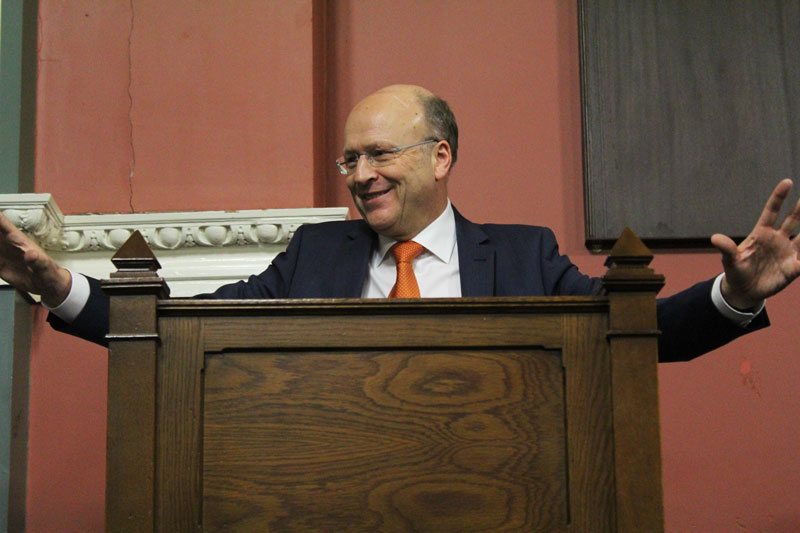
What does it mean to be an EU citizen? This is the question that Koen Lenaerts, President of the European Court of Justice, answered this evening. The final event of Dublin University Law Society’s (Law Soc) 2016 calendar saw Lenaert receive the society’s Praeses Elit award. As well as this ceremony, Lenaerts spoke and then participated in a Q&A session conducted by Mr Kieran Bradley of the European Union Civil Service Tribunal.
Lenaerts has already amassed significant achievements during his career. As well as his position as President of the European Court of Justice, a role he has filled for just over a year, Lenaert has been a Professor of European Law at the University of Leuven since 1983 and has been a judge at the Court of Justice since 2003.
Praeses Elit is an award that, according to Auditor of Law Soc, Hilary Hogan, honours “individuals who have excelled” in their chosen field, and she described Lanaert as “one of the most distinguished legal minds in Europe”. Following Hogan’s introduction, Lanaert stood and said he was “grateful” for the award and to be “following in the footsteps of so many distinguished women and men”.
Lenaert said that decisions made in the European Court of Justice have been critical in determining in how the EU develops and therefore crucial in shaping what it means to be an EU citizen. Lanaert explained this connection by looking at three recent judgements by the court.
The first case, Zembrano, dealt wish issues of residency for the parents of children who are legal citizens in a country. Lenaert said that fundamental to being an EU citizen was the fact that you have a right to reside in Europe. Secondly, Lenaerts spoke of a 2015 decision, commonly referred to as the Chez case, which he said “stems from the right of all EU citizens to be treated equally free from discrimination”.
Finally Lenaert discussed a case that he introduced as concerning “a particularly modern law. I don’t have to tell your generation that one click may be enough for personal data to be transferred anywhere around the world”. This case was brought against Google, and concerned data protection and privacy law, with the court’s decision establishing the now famous “right to be forgotten”.
These cases, Lenaerts said, show how one single citizen has the potential to change EU law. He took pains to show the individual’s role in the EU even as he explained the layers and layers of bureaucracy operating within the institution. As Lenaerts put it, “citizens are the agents behind landmark cases which are decided by our judges”.
Perhaps more aimed at law students, rather than the general student population, Lenaer was still able to capture the extraordinary scope of EU law.
Following this discussion, Bradley began the Q&A. Discussing his own role as President of the European Court of Justice, Lenaerts described the court as a self-governing institution. EU law, he said, is not a branch of law, but a source of law and that “in Ireland European Union law is Irish law, in Estonia it’s Estonian law and in Belgium it’s Belgian law”.
The difference between the Council of Europe and the European Court of Justice is that the courts, despite being lawmakers, do not set their own agenda but instead must wait for applications to be made to them.
The event, supplemented with plenty of wine, was incredibly informative for all those closet fans of the EU. Yet more importantly, it was hopeful. In a world where the future of the union is being discussed and debated, it was touching to be reminded of an individual’s power to shape and determine what it means to be a European citizen.






